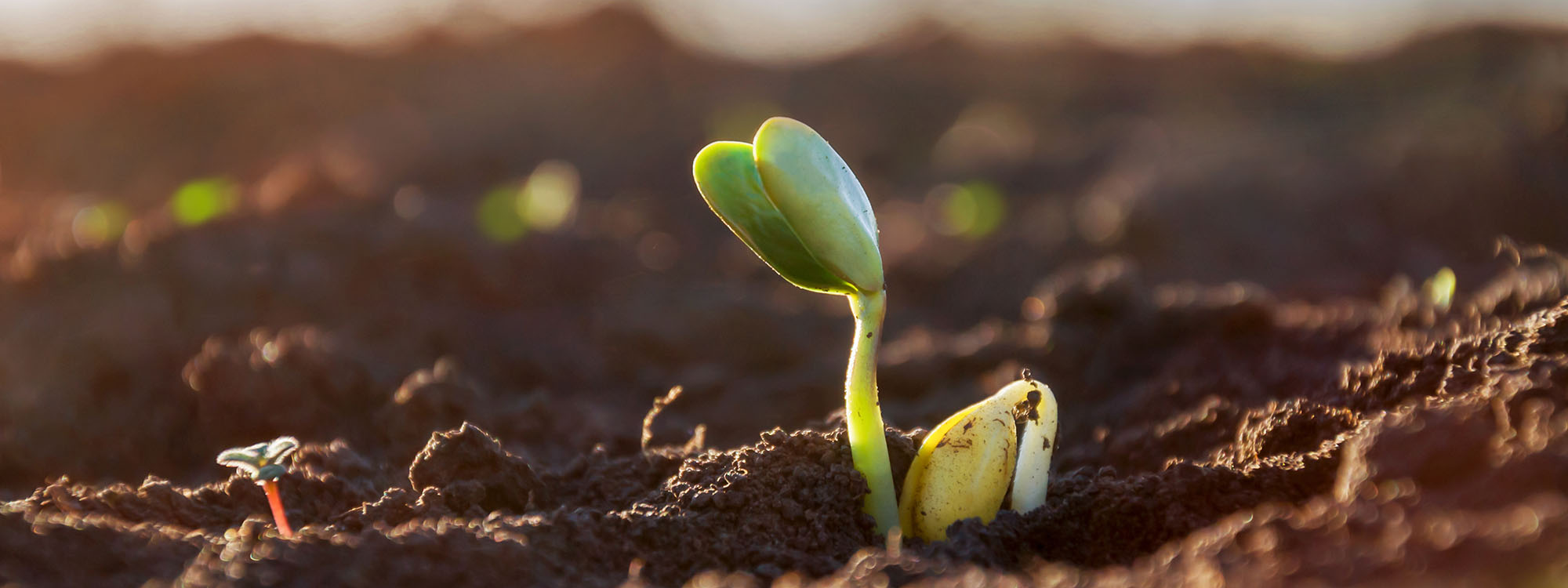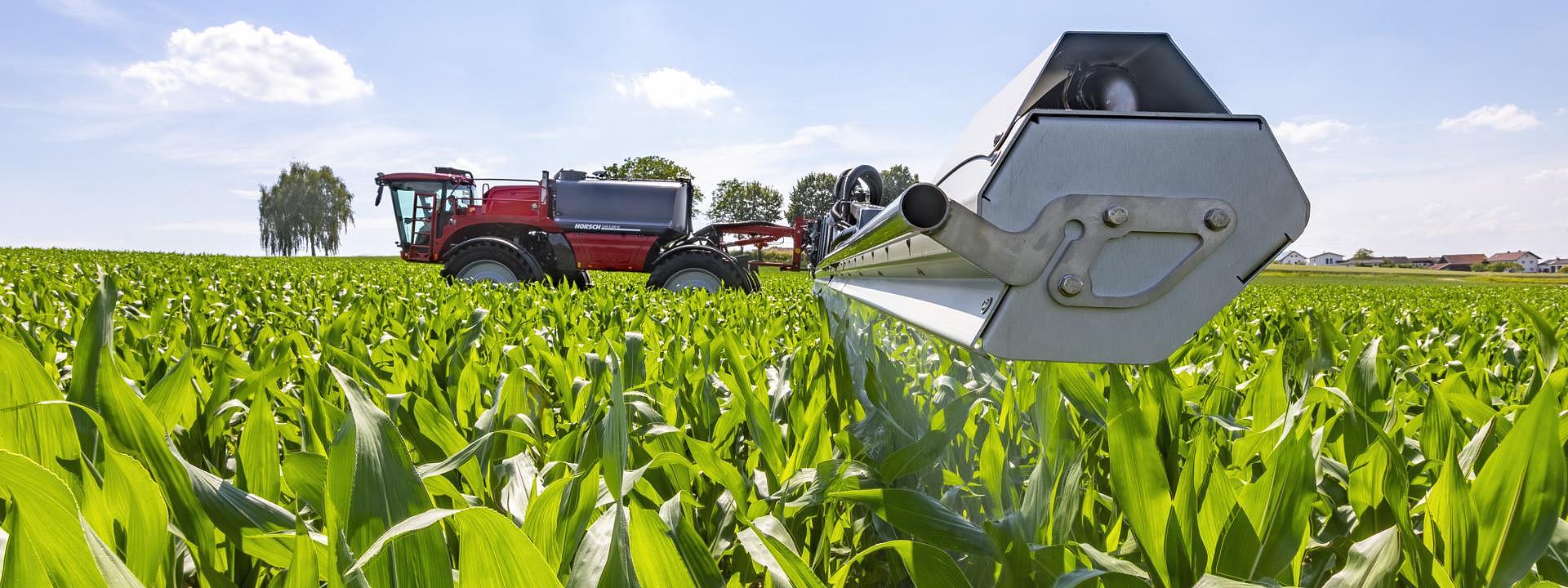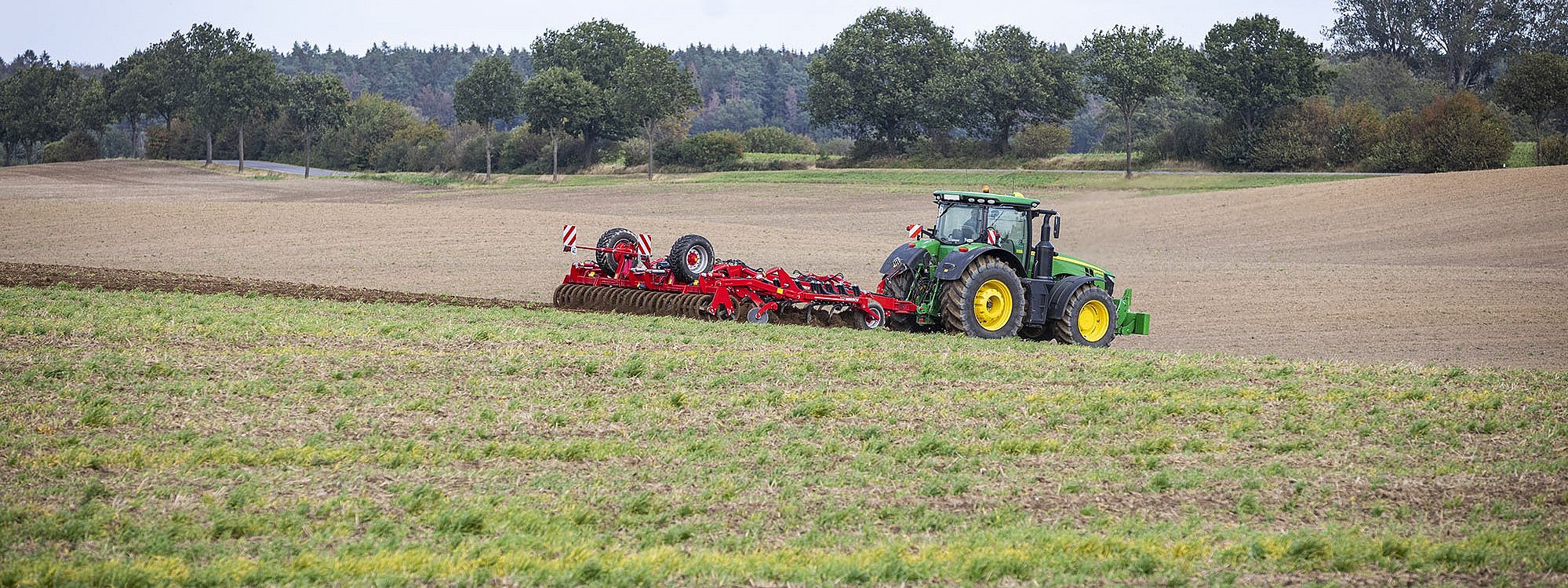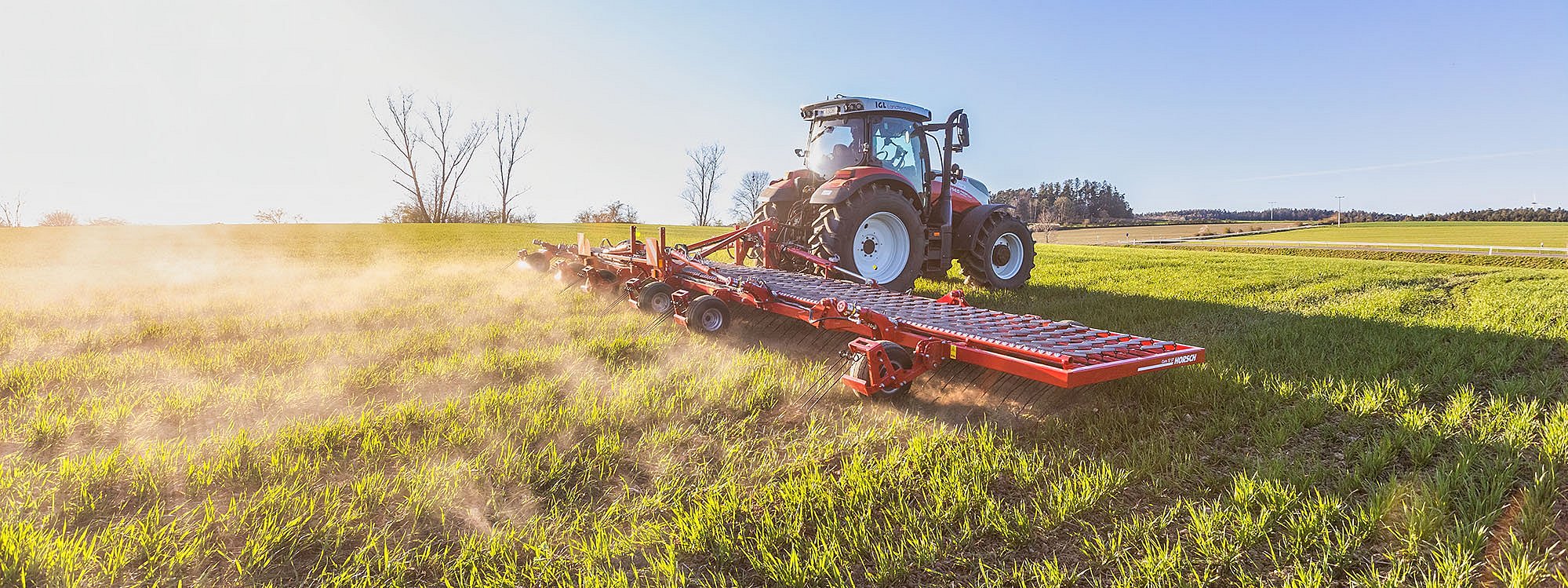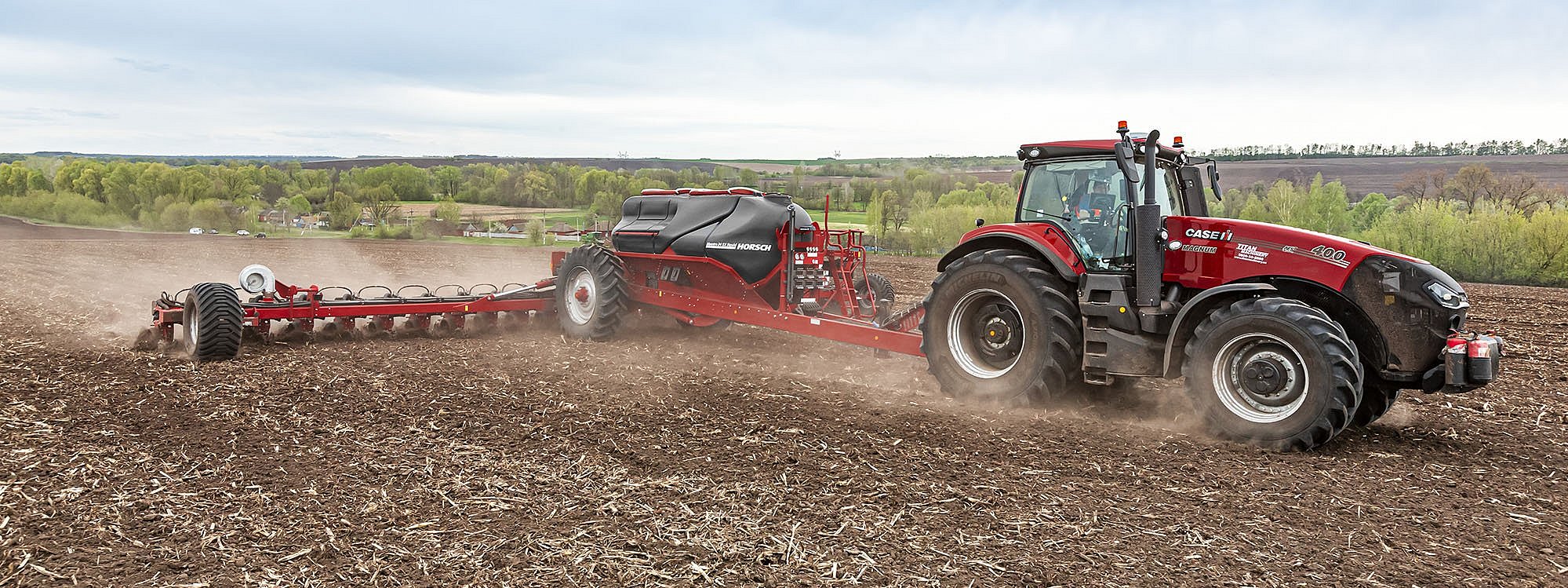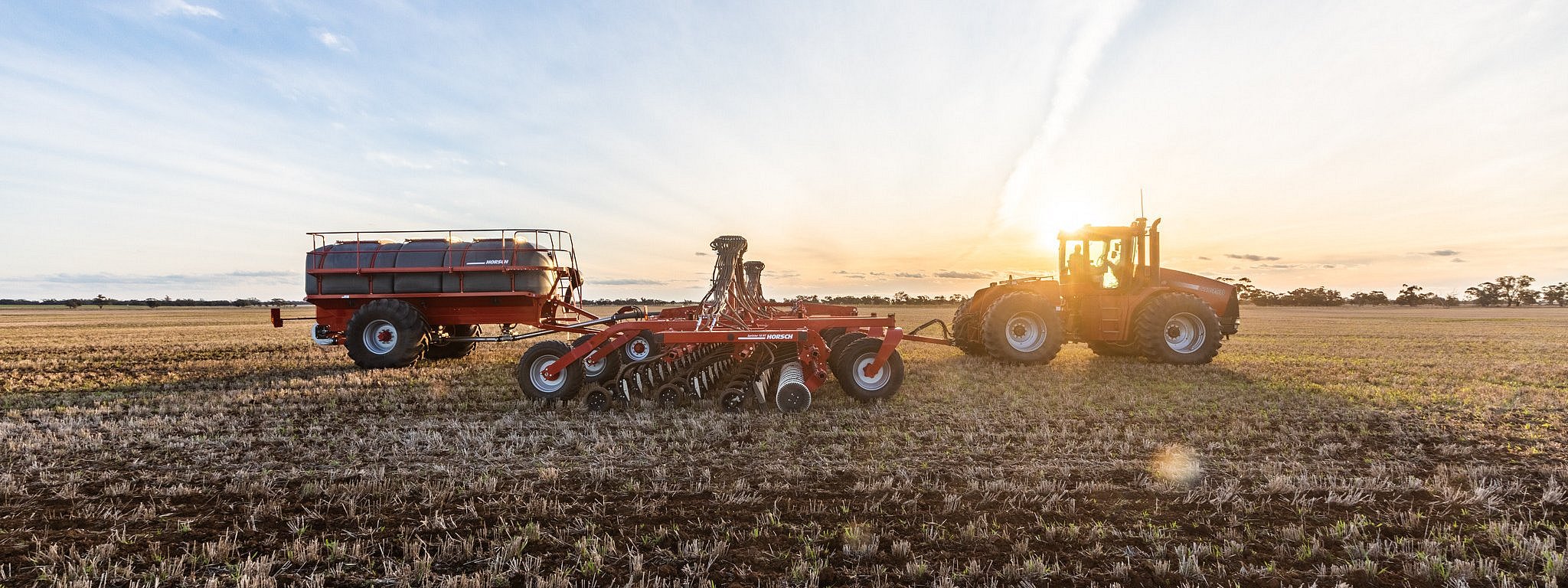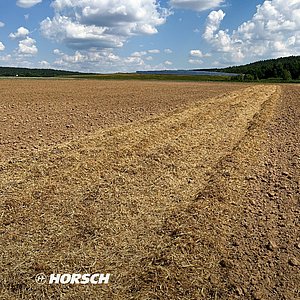Straw distribution after stubble cultivation (II)
<small>Average reading time: 5 minutes</small>
In the last blog article, we discussed straw distribution before stubble cultivation. What did we learn? That it is particularly important to take a look behind the combine. The keywords are:
- Homogeneous straw distribution
- Good chaff quality
But now we are talking about the straw distribution during the stubble cultivation. And this is why we have carried out a little test. In this test, we took a closer look at the transport distance. But why, how and what? We will tell you more about it:
First of all, what does the transport distance stand for?
The transport distance indicates how long and how far organic material is carried along by the machine. This factor is crucial for two principles that should be taken into account when cultivating stubbles. On the one hand, it affects the mixing quality of straw and soil which in turn is a basic prerequisite for successful rotting. And on the other hand, a homogeneous incorporation is achieved by a long transport distance. This prevents the creation of straw nests and thus the creation of disturbance horizons for the following crop.
As it turns out, the transport distance of organic material plays a rather significant role. And this is why we have dealt more intensely with this topic.
This is how the test was carried out:
It was important to create equal conditions for all implements and settings. Therefore, the test was not carried out in a typical stubble field, but straw distribution was simulated instead.
- For this purpose, straw was loosely laid in a three-metre-wide swath on a prepared field with a chopper.
- The field then was cultivated with the machines at a 90° angle to the swath.
The straw yield of 2.45 kg per square metre in the straw swath is rather high in relation to real conditions. However, the extreme case of a bad straw distribution could thus be shown and tested. In addition, the effects became more visible.
The chaff length of the straw was approx. 5 cm. The test took place on a sandy-loamy soil with approx. 40 ground points. Due to the long drought, the first 10 cm of the soil were hardly filled with water. This, of course, are extremely hard conditions for the distribution and incorporation of straw.
Discs, tines, rotors and harrows were used.
Whether shallow or deep, whether discs or tines - there is no universal solution for the first stubble cultivation. For this pass has to be adapted to the prevailing conditions and selected individually. This is the reason why all HORSCH machines that have been designed to be used in stubbles were used in our test.
And now we took the measurements. In order to be able to make a statement about the transport distance, both the maximum as well as the average distance were measured. The maximum distance was defined at the point where the last straw residues were visible. The average distance was defined at the point where straw was still lying on the surface over the whole working width of the machine.
| Working depth | Settings | Average straw distribution | max. straw distribution |
1. Finer |
|
|
|
|
1.1 | 5 cm | Without harrow | 6 m | 9 m |
1.2 | 5 cm | Aggressive harrow | 9 m | 15 m |
1.3 | 12-15 cm | Aggressive harrow | 9 m | 13, 5 m |
2. Cultro |
|
|
|
|
2.1 |
| Only harrow | 10 m | 16,5 m |
3. Terrano |
|
|
|
|
3.1 | 5 cm |
| 5 m | 8,5 m |
3.2 | 20 cm |
| 5 m | 9,5 m |
4. Kredo |
|
|
|
|
4.1 |
|
| 5,5 m | 25 m |
5. Cruiser |
|
|
|
|
5.1 | 10 cm |
| 7 m | 20 m |
5.2 | 15 cm |
| 6 m | 20 m |
5.3 | 5 cm |
| 6 m | 12,5 m |
6. Joker |
|
|
|
|
6.1 | 5 cm |
| 6 m | 10 m |
6.2 | 10 cm |
| 6 m | 9 m |
The summary of the test: saving costs with optimum straw distribution
According to the motto "Don’t leave to stubble cultivation what the combine can do", you should take care of an optimum straw distribution already during the harvest. The reason is simple: Costs can be saved, and the problem of a bad straw distribution does not have to be solved by stubble cultivation.
If you still have to distribute harvest residues, you should definitely use tools with tines.
- As a rule, organic matter is carried along and kept longer in the machine.
- Ideally, the tine section is followed by a following harrow that guarantees an additional distribution. This was also obvious in the test plots where the harrow was used.
- In case of bad straw distribution, cultivation should be carried out diagonally to the direction of threshing.
If, on the other hand, a good straw distribution is guaranteed, the intensity of straw incorporation probably is the most important factor. The Joker is particularly suitable for this purpose because, as you can be seen in the photo, there is an intensive and strong incorporation even at a short distance. Furthermore, Finer or Cruiser can be used especially for this purpose.
